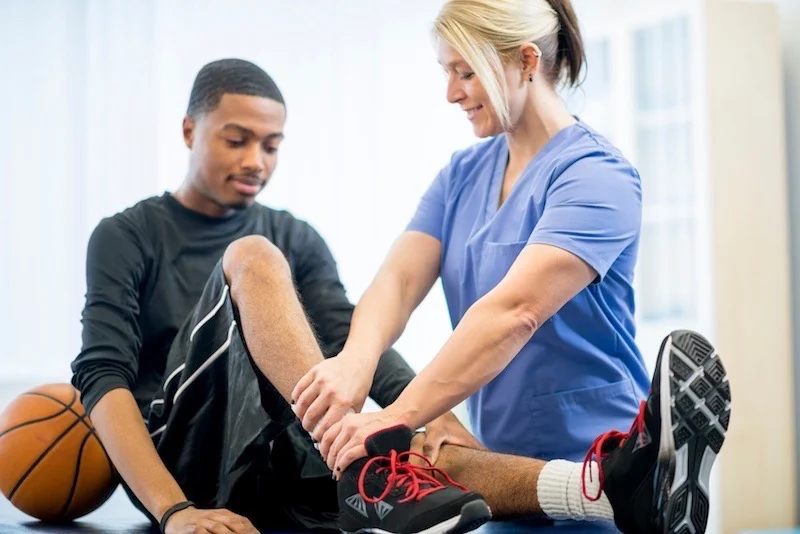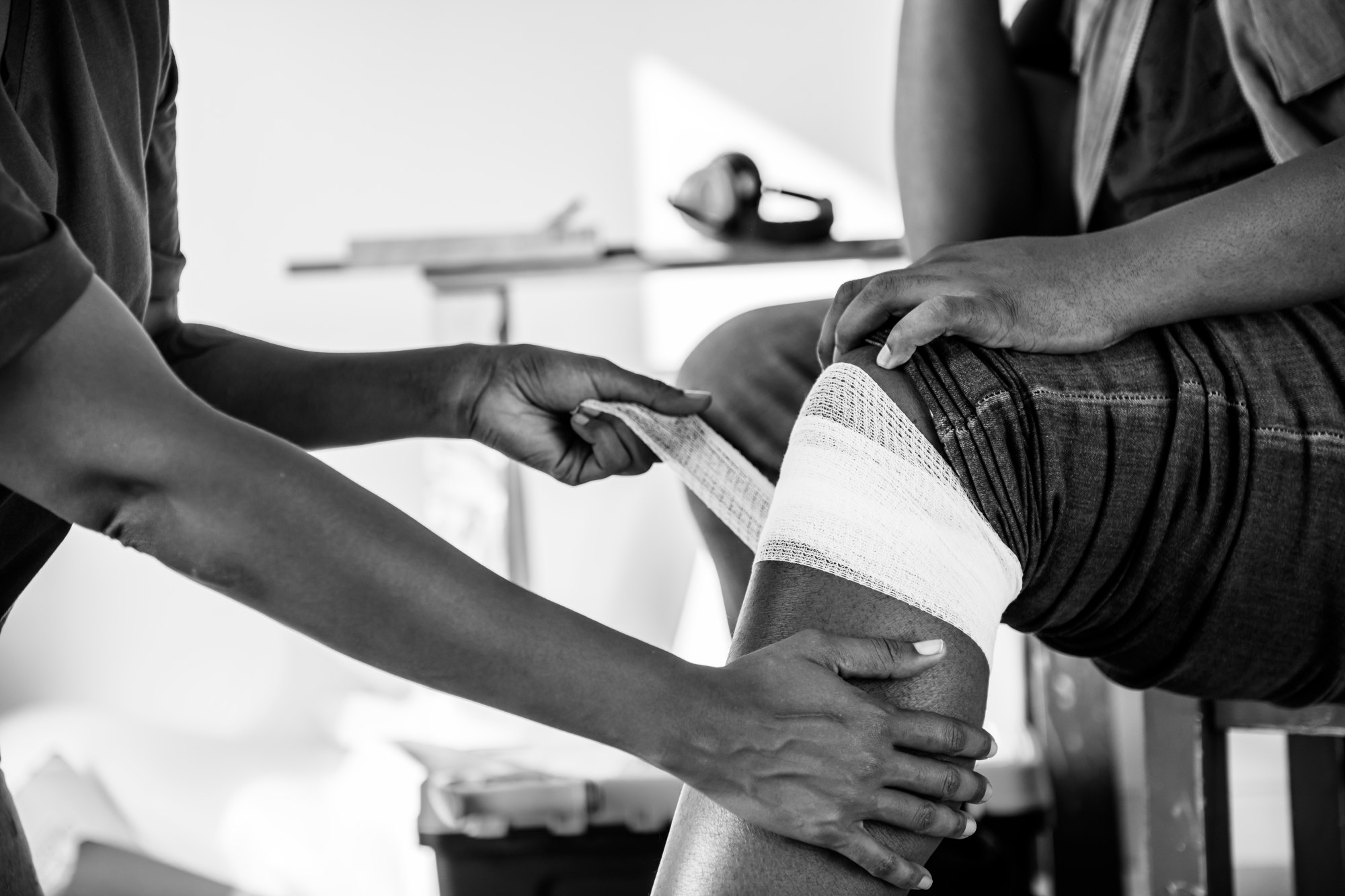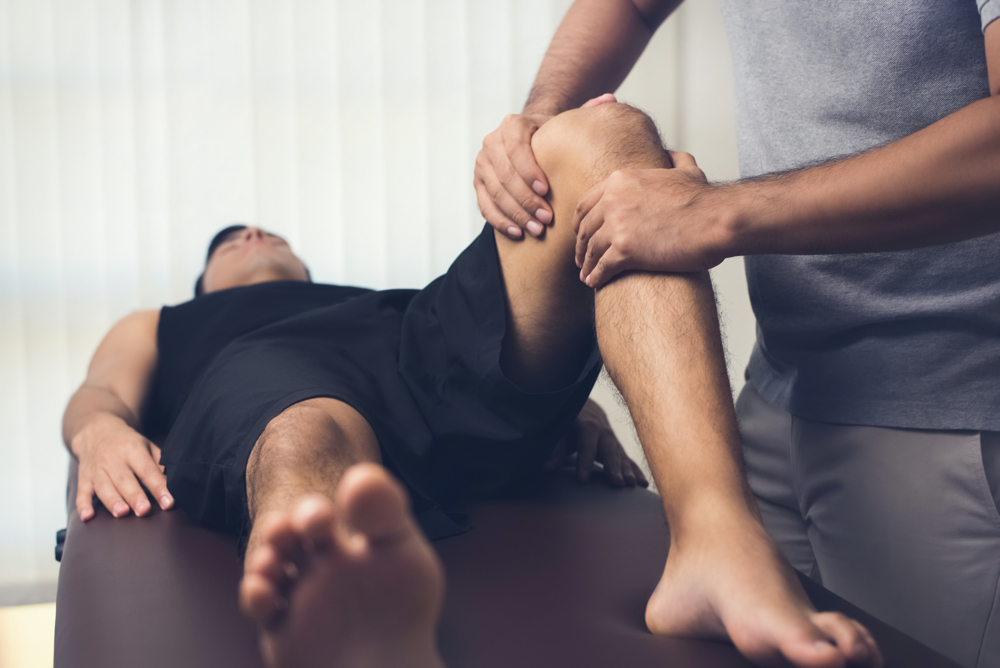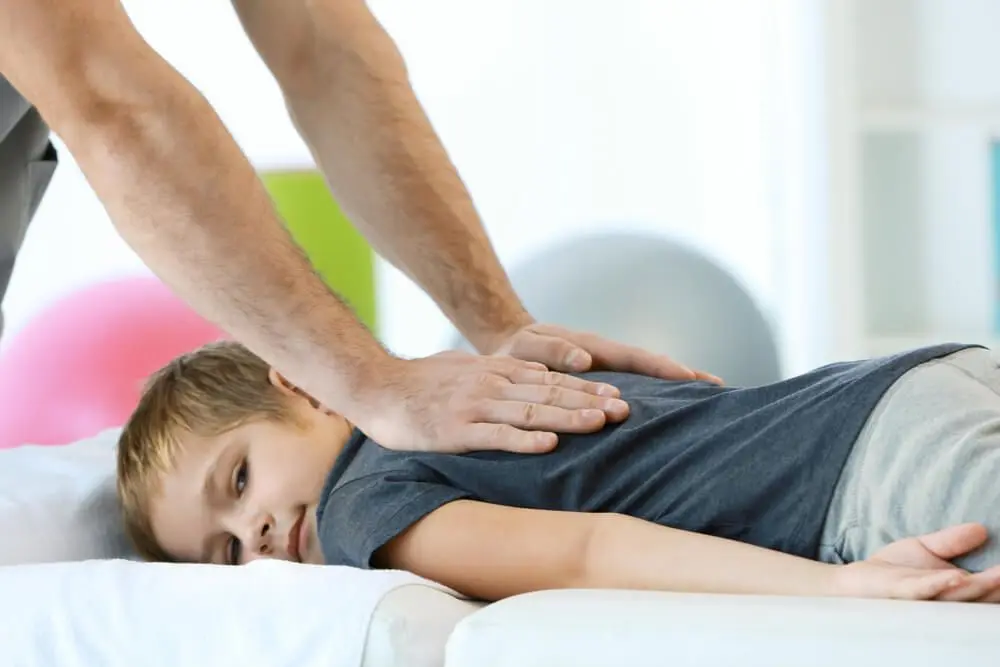When you play sports, injuries can happen. You might twist an ankle or pull a muscle. It is important to know how to treat these injuries. This Treating Common Sports Injuries will help you understand common sports injuries and how to deal with them, especially if you live in Riverdale, Utah.
Key Takeaways
- Sports injuries often happen from overuse or accidents.
- Common injuries include sprains, strains, and fractures.
- Rest, ice, compression, and elevation can help with recovery.
- Chiropractic care can support healing and improve performance. Explore how chiropractic care can enhance your athletic performance.
- Prevention is key to avoiding injuries in the first place.
Understanding Common Sports Injuries
Sports injuries are any injuries that happen while playing sports. They can affect anyone, from kids playing soccer to adults running marathons. Here are some common types:
Sprains
A sprain happens when you stretch or tear a ligament. Ligaments are tough bands of tissue that connect bones at a joint. Sprains often happen in the ankle or knee. Signs include swelling and pain when you try to move the joint.
Strains
Strains are similar to sprains but involve muscles or tendons. Tendons connect muscles to bones. Strains often happen in the back, hamstrings, or shoulders. You might feel pain, muscle spasms, or a limited range of motion.
Fractures
A fracture is a break in a bone. This can happen from falling, jumping, or twisting the wrong way. Symptoms include severe pain and swelling, and sometimes you can see the bone through the skin.
Tendonitis
Tendonitis is when a tendon becomes inflamed. This can happen from overuse. Common areas include the elbow, shoulder, and knee. You may feel pain when you move the affected area.
Contusions
Also known as bruises, contusions happen from a direct blow. This can happen in contact sports like football or hockey. You might see discoloration and feel tenderness.
Common Injuries Overview
| Type of Injury | Affected Areas | Typical Causes | Recommended Treatment |
|---|---|---|---|
| Sprains | Ankle, Knee | Twisting, falling | R.I.C.E., compression |
| Strains | Back, Hamstrings | Overstretching, lifting | R.I.C.E., physical therapy |
| Fractures | Arm, Leg | Falls, impacts | Medical evaluation, rest |
| Tendonitis | Elbow, Shoulder | Repetitive motion | R.I.C.E., therapy |
Who is at Risk?
Anyone who plays sports can get hurt. However, some people are at a higher risk. This includes athletes who do not warm up properly, those who play without protective gear, or those who push their bodies too hard.
Children and teens are also at risk because their bodies are still growing. They may not always know their limits. It’s important for parents and coaches to watch for signs of injury.
Symptoms of Sports Injuries
You may notice symptoms right after an injury occurs. The most common signs are:
- Pain or tenderness
- Swelling
- Bruising
- Limited movement
- A popping sound at the time of injury
If you notice these signs, it’s best to take action quickly.
Diagnosing Sports Injuries
To treat an injury, it is important to know what is wrong. A doctor or chiropractor can help with this. They will ask about how the injury happened. They may also do physical tests to check how well you can move the affected area.
Sometimes, tests like X-rays or MRIs are needed. These tests can show if there are any broken bones or tears in muscles.
Initial Treatment for Sports Injuries
Once you know what the injury is, treatment can begin. Here are some common first-aid steps:
R.I.C.E. Method
The R.I.C.E. method stands for Rest, Ice, Compression, and Elevation. This method is effective for many common sports injuries.
- Rest: Stop using the injured area. This will help prevent further damage.
- Ice: Apply ice to the injury for about 15-20 minutes every hour. This helps reduce swelling and pain.
- Compression: Use a bandage to wrap the injury. This helps keep swelling down.
- Elevation: Keep the injured area raised above the level of the heart. This also helps reduce swelling.
Over-the-Counter Pain Relief
Sometimes, you might need pain relief. Over-the-counter options like ibuprofen or acetaminophen can help. Always follow the instructions on the label and talk to a doctor if you are unsure.
Benefits of Physical Rehabilitation
- Strengthening exercises: To rebuild muscle strength.
- Flexibility training: To improve the range of motion.
- Balance exercises: To enhance stability and prevent future injuries.
After the initial treatment, many people benefit from physical therapy. This helps strengthen the injured area and improve flexibility. A physical therapist will create a plan just for you. They may use exercises, stretches, and other treatments.
When to See a Chiropractor
Chiropractors specialize in treating injuries related to the spine and joints. They can help with pain and improve movement. If you have ongoing pain or limited movement, it might be time to see one. Learn more about how chiropractic care can help with your recovery.
Chiropractic care can align your body and help it heal naturally. This is especially helpful for sports injuries. Many athletes in Riverdale turn to chiropractic care for recovery and performance.
Preventing Sports Injuries
The best way to deal with sports injuries is to avoid them in the first place. Here are some tips to help you stay safe:
Warm-Up and Cool Down
Always take time to warm up your muscles before playing. Stretching helps prepare your body for activity. After you finish, cool down with more stretches. This helps prevent stiffness.
Use Proper Gear
Wearing the right equipment is essential. Whether it’s a helmet for football or proper shoes for running, good gear can protect you from injuries.
Listen to Your Body
Pay attention to how your body feels. If you are tired or in pain, it’s okay to take a break. Pushing through pain can lead to more serious injuries.
Stay Hydrated
Drinking water helps your body stay strong. Make sure to drink enough before, during, and after sports.
Common Misconceptions About Sports Injuries
Many people have misconceptions about sports injuries. Here are a few common ones:
“I Can Push Through the Pain”
Some think they can ignore pain and keep playing. This can make injuries worse. It’s better to listen to your body and rest.
“Surgery is Always Needed”
Not every injury requires surgery. Many can heal with rest, therapy, and chiropractic care. Always consult with a healthcare provider to explore your options.
“I Don’t Need to Warm Up”
Skipping warm-ups can lead to injuries. Take the time to prepare your body for activity. This simple step can make a big difference.
Statistics on Sports Injuries
| Injury Type | Incidence Rate (per 1,000 athletes) | Common Age Group | Suggested Prevention Strategies |
|---|---|---|---|
| Sprains | 20 | 15-25 | Proper warm-up, ankle support |
| Strains | 15 | 25-35 | Strength training, flexibility |
| Fractures | 5 | 10-20 | Protective gear, technique |
| Tendonitis | 10 | 30-40 | Gradual training increases |
Conclusion
Treating common sports injuries is important. Knowing what to do can make recovery easier. Remember to use the R.I.C.E. method when you get hurt. If pain continues, seek help from a doctor or chiropractor.
In Riverdale, Utah, many options are available for care. You are not alone in your journey. Keep playing, stay safe, and enjoy your sports!
Final Thoughts
Sports injuries can happen to anyone at any time. Understanding how to treat them is key to staying active and healthy. Always remember to warm up, wear gear, and listen to your body. With the right care, you can get back to doing what you love.
If you have questions or need help, feel free to reach out. Your health and wellness are important. Let’s work together to keep you moving forward!









Social Contact